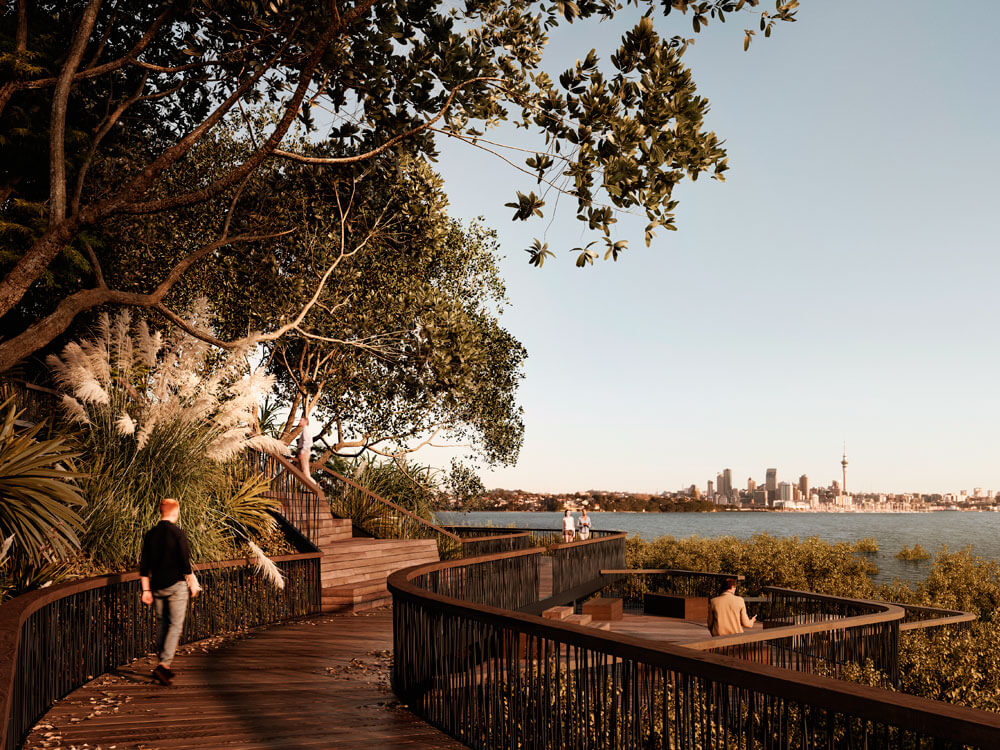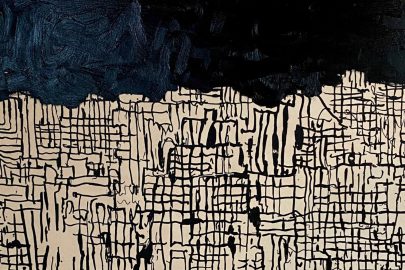Dec 6, 2020 Urban design
Metro x Amaia: Amaia, a new residential complex currently in development in Takapuna, is looking to help change the way Aucklanders live in their city, encouraging connection, community, health and wellbeing.
In its approach to design and urban development, Amaia takes a holistic approach to cultivation of its surrounding land and its relationship to the city.
Metro asked three consultants on the project — Zaelene Maxwell-Butler, Aukaha Pākaekae of Ngāi Tai ki Tāmaki RMA Taiaomaurikura, the mana whenua of the area; Alistair Ray, head of urban design at Jasmax, the development’s principle architects; and Dean Kimpton, owner and principal planner at Tuhura Consulting and project lead at developer’s KBS Capital — to find out more about the design philosophy going into the development of this unique and significant site.
How does Amaia represent the future of housing in Auckland?
Dean Kimpton: Everybody needs a home — a place to be safe and secure to enjoy with privacy — but you also need to bring people together and the urban design of Amaia helps create a new urban village on this really unique part of Auckland’s landscape.
Alistair Ray: It’s challenging the way we live in Auckland. For too long, our default has been that you get your own house on its own piece of land with room to park cars and maybe even a boat. That can work for cities up to a certain size, but once a city gets bigger, you can’t keep building that. People can’t move around and the infrastructure can’t support it. Amaia is challenging in the best possible way and the people who live there are going to live differently. They might not own a car because they might not need one.
How does Amaia interact and connect with Auckland without need for a car?
Dean Kimpton: Amaia is a nexus, a hub. It’s a place that people can pass through, so there’s the walkway around the perimeter, making it open and available for anyone to enjoy and to make it part of the fabric of Takapuna, not just a stand-alone island. It’s not a gated community – there’s no wall, it’s open and welcoming. It’s also designed for the people who live there to have easy access to the city, through cycleways, public transport, easy walks to beaches. It’s a highly connected part of the Auckland landscape.
How can a development like this encourage new ways of living in a city?
Alistair Ray: What is special about Amaia is it’s on a self-contained piece of land and is of a scale that’s able to provide sufficient residents’ facilities that a single apartment building might not be able to do, so we’re trying to create a sense of community, a village. In a village, you feel like you can really know the other people living there and actually spend time with each other.
What was Ngāi Tai’s contribution and partnership with the Amaia project?
Zaelene Maxwell-Butler: With our kaiwhakairo and urban designer Reuben Kirkwood, a cultural design narrative from our iwi Ngāi Tai ki Tāmaki informed the project, speaking to strength and mana and the form of the whenua. We looked at the surrounding native bush, we looked at the waterways, we took our lead from the whenua. We looked to the historical features and names of the surrounding coastal inlet area; Waipaoraora, the ‘healthy, healing waters’, Wakatatere, the internal freshwater tributary of Waipaoraora and once a waka-maintenance site; Te Puna Wai ā Tene, an ancient spring. Those will help inform designs, whether they’re water flow designs, whether they’re waka designs given for some of the facades, it could be in the landscaping.
While we look to the past, we also look to the present and then into the future. Through design, sustainability practices and materials we want to encourage and enhance the mauri o te taiao (life force of the environment), for the waterways to be healthy, for the ngahere (bush) to flourish and to be loud with the song of manu. We’re wanting to ensure a really healthy development site — not only for the people who live there, but that the people who live there nurture and look after the space, that something beautiful will help heal the land.
This article was produced in partnership with Amaia.






